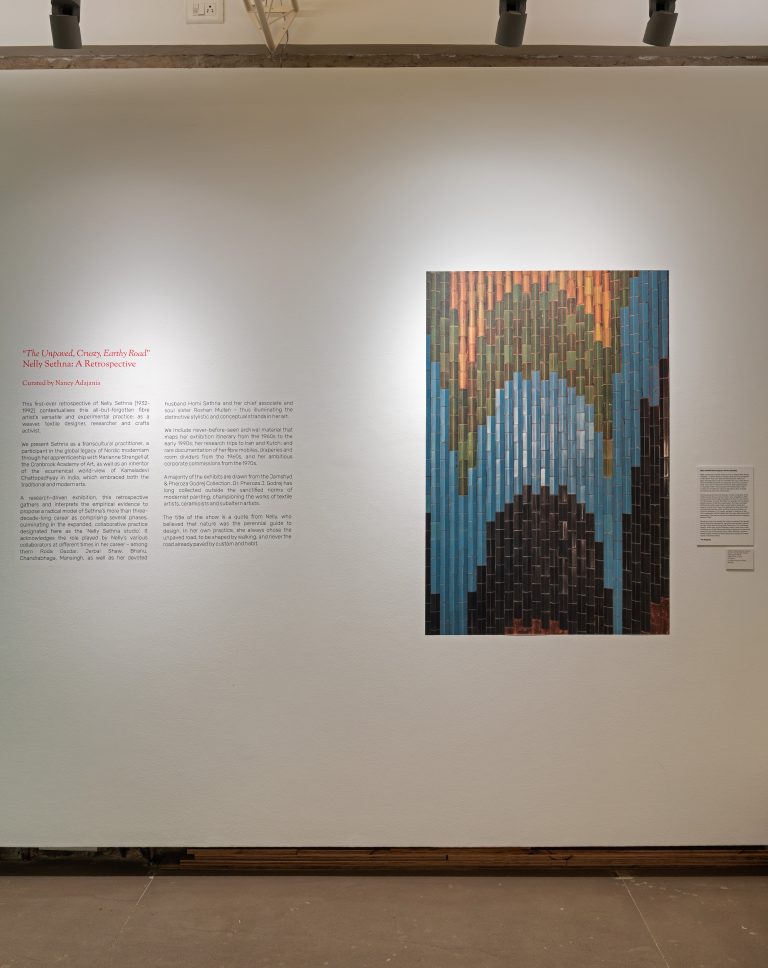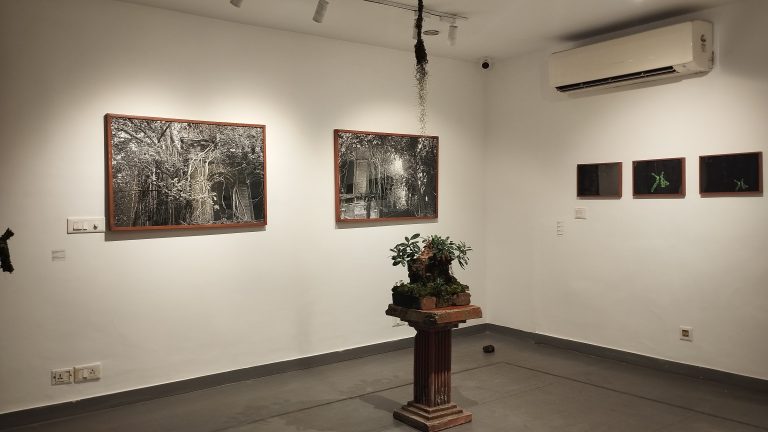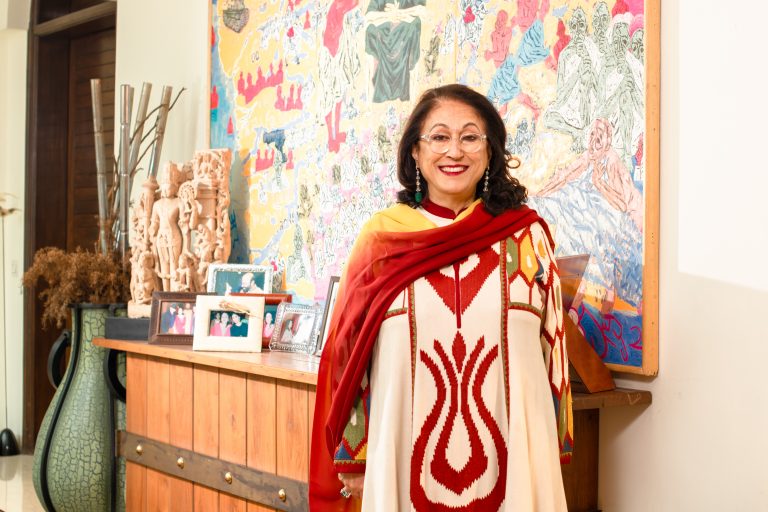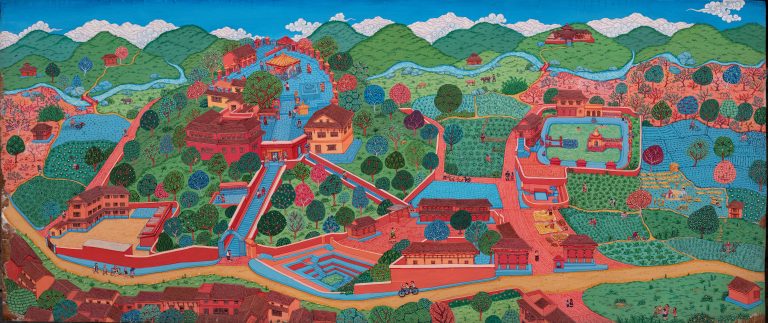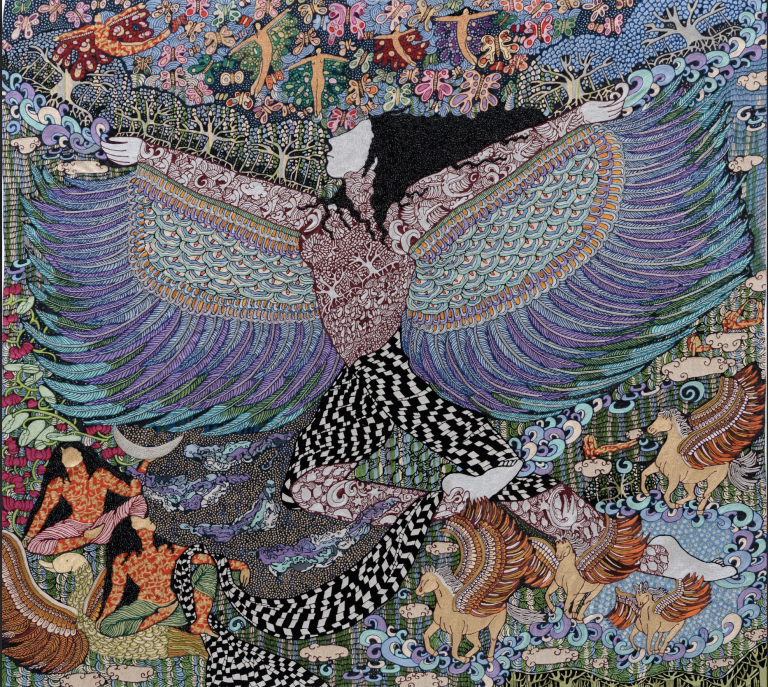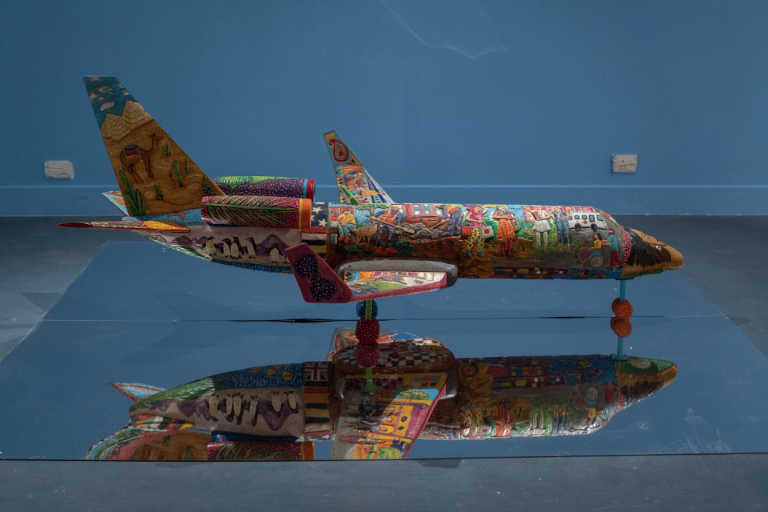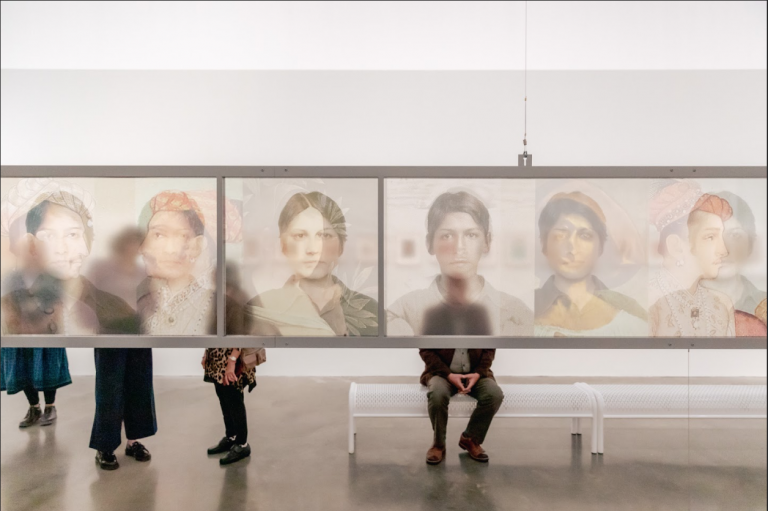Essay
By Mortimer Chatterjee
The inherent internationalism with which Godrej imbued Cymroza insured its cultural relevance and allowed for young artistic talent to gain attention. Over time, she built up an impressive roster of artists who would exhibit regularly at the gallery: artists such as Rekha Rodwittya, Madhvi Subramanian, KG Subramanyan, Jai Zharotia, Haku Shah, Arpana Caur, and Akbar Padamsee. As Godrej makes clear, “we also paid attention that all this work was documented through our annual catalogues that encouraged contributions from art critics as well as art historians, that were then distributed to a wide community of visitors, collectors and art admirers.” Beyond the visual arts, she was equally committed to design practices, foregrounding crafts techniques from around the country.
Read More







